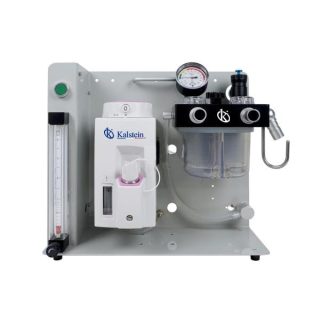Anesthesia allows surgical interventions in animals to be carried out safely and without suffering. Veterinarians rely on advanced anesthesia machines to ensure the effectiveness of the procedure and the safety of the patient. This article provides a detailed process of anesthesia administration using these machines in a veterinary operating room.
Preparing the Anesthesia Machine
The first essential step to using an anesthesia machine involves the preparation of the equipment. To ensure effective and safe delivery of anesthetics to patients, the machine must be carefully reviewed before each procedure.
The check process includes the inspection of mechanical components, the evaluation of anesthetic gas and oxygen levels, the checking for possible leaks, confirmation of proper functioning of alarm systems, and calibration of monitors.
Choice and Administration of Anesthetics
The second step is the choice of anesthetic. Veterinarians select the combination of anesthetics that best fits the needs of the animal, considering factors such as its health status, size, species, and the nature of the surgical procedure to be performed.
For the administration of anesthetics, anesthesia machines have a vaporizer which transforms the liquid anesthetic into gas. This vapor is mixed with oxygen and is administered through an anesthesia tube to the patient’s respiratory system.
Monitoring During Anesthesia
Once the anesthetic has been administered, it is critical to continuously monitor the patient’s vital state to detect any changes that might require adjustments in the delivery of anesthesia. Modern anesthesia machines include sophisticated monitors that measure vital parameters such as heart rate, blood pressure, blood oxygen level, and exhaled carbon dioxide concentration.
Veterinarians must be able to interpret these data correctly, as they allow them to adjust the provided anesthetic concentration, keeping the patient at the correct anesthesia level throughout the operation.
Post-Anesthesia Awakening and Recovery
After the surgical procedure is completed, the administration of anesthetic gases is stopped to allow the animal to wake up. During this phase, it is vital to monitor the animal’s breathing, heart rate, and temperature to ensure a safe recovery.
Modern anesthesia machines are invaluable at this stage. They allow oxygen to flow to help clear any remnants of the anesthetic from the animal’s lungs. Plus, many units have the capability to provide assisted ventilation if the animal is having trouble regaining normal breathing.
In summary, anesthesia machines play a fundamental role in delivering safe and effective surgical care in the veterinary field. They supply anesthesia in a controlled manner, maintain vital monitoring, and support the patient’s recovery after surgery, reinforcing the need for their correct and effective use.
If you want to know the catalog of high-end products that we have for you at KALSTEIN, visit us at https://kalstein.us/. We also assure you that through our online PURCHASE channels, which are very easy and viable, you will find the best PRICES on the market. Remembering that we are a MANUFACTURING Company of high-level Laboratory Equipment for SALE. https://kalstein.us/category-product/veterinary-sector/veterinary-anesthesia-machine/

